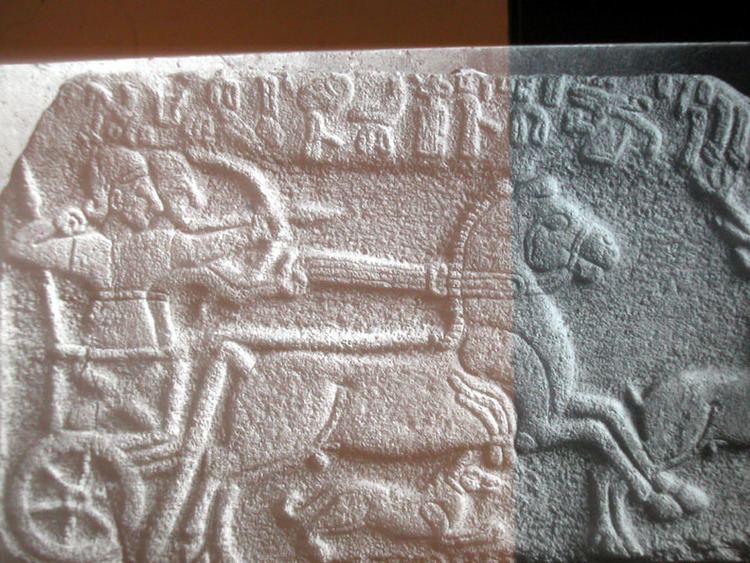 | ||
The states that are called Neo-Hittite, or more recently Syro-Hittite were Luwian-, Aramaic- and Phoenician-speaking political entities of the Iron Age in northern Syria and southern Anatolia that arose following the collapse of the Hittite Empire around 1180 BC and which lasted until roughly 700 BC. The term "Neo-Hittite" is sometimes reserved specifically for the Luwian-speaking principalities like Milid and Carchemish, although in a wider sense the broader cultural term "Syro-Hittite" is now applied to all the entities that arose in south-central Anatolia following the Hittite collapse—such as Tabal and Quwê—as well as those of northern and coastal Syria.
Contents
Late Bronze Age-Early Iron Age transition
The collapse of the Hittite Empire is usually associated with the gradual decline of Eastern Mediterranean trade networks and the resulting collapse of major Late Bronze Age cities in the Levant, Anatolia and the Aegean. At the beginning of the 12th century BC, Wilusa (Troy) was destroyed and the Hittite Empire suffered a sudden devastating attack from the Kaskas, who occupied the coasts around the Black Sea, and who joined with the Mysians. They proceeded to destroy almost all Hittite sites but were finally defeated by the Assyrians beyond the southern borders near the Tigris. Hatti, Arzawa (Lydia), Alashiya (Cyprus), Ugarit and Alalakh were destroyed.
Hattusa, the Hittite capital, was completely destroyed. Following this collapse of large cities and the Hittite state, the Early Iron Age in northern Mesopotamia saw a dispersal of settlements and ruralization, with the appearance of large numbers of hamlets, villages, and farmsteads. Syro-Hittite states emerged in the process of such major landscape transformation, in the form of regional states with new political structures and cultural affiliations. David Hawkins was able to trace a dynastic link between the Hittite imperial dynasty and the "Great Kings" and "Country-lords" of Melid and Karkamish of the Early Iron Age, proving an uninterrupted continuity between the Late Bronze Age and the Early Iron Age at those sites.
Aside from literary evidence from inscriptions, the uninterrupted cultural continuity of Neo-Hittite states in the region from the Late Bronze Age to the Early Iron Age is now further confirmed by recent archaeological work at the Temple of the Storm God on the citadel of Aleppo, and Ain Dara temple, where the Late Bronze Age temple buildings continue into the Iron Age without hiatus, with repeated periods of construction in the Early Iron Age.
List of Syro-Hittite states
The Syro–Hittite states may be divided into two groups: a northern group where Hittite rulers remained in power, and a southern group where Aramaeans came to rule from about 1000 BC. These states were highly decentralised structures; some appear to have been only loose confederations of sub-kingdoms.
The northern group includes:
The southern, Aramaic, group includes:
Inscriptions
Luwian monumental inscriptions in Anatolian hieroglyphs continue almost uninterrupted from the 13th-century Hittite imperial monuments to the Early Iron Age Syro-Hittite inscriptions of Karkamish, Melid, Aleppo and elsewhere. Luwian hieroglyphs were chosen by many of the Syro-Hittite regional kingdoms for their monumental inscriptions, which often appear in bi or tri-lingual inscriptions with Aramaic, Phoenician or Akkadian versions. The Early Iron Age in Northern Mesopotamia also saw a gradual spread of alphabetic writing in Aramaic and Phoenician. During the cultural interactions on the Levantine coast of Syro-Palestine and North Syria in the tenth through 8th centuries BC, Greeks and Phrygians adopted the alphabetic writing from the Phoenicians.
